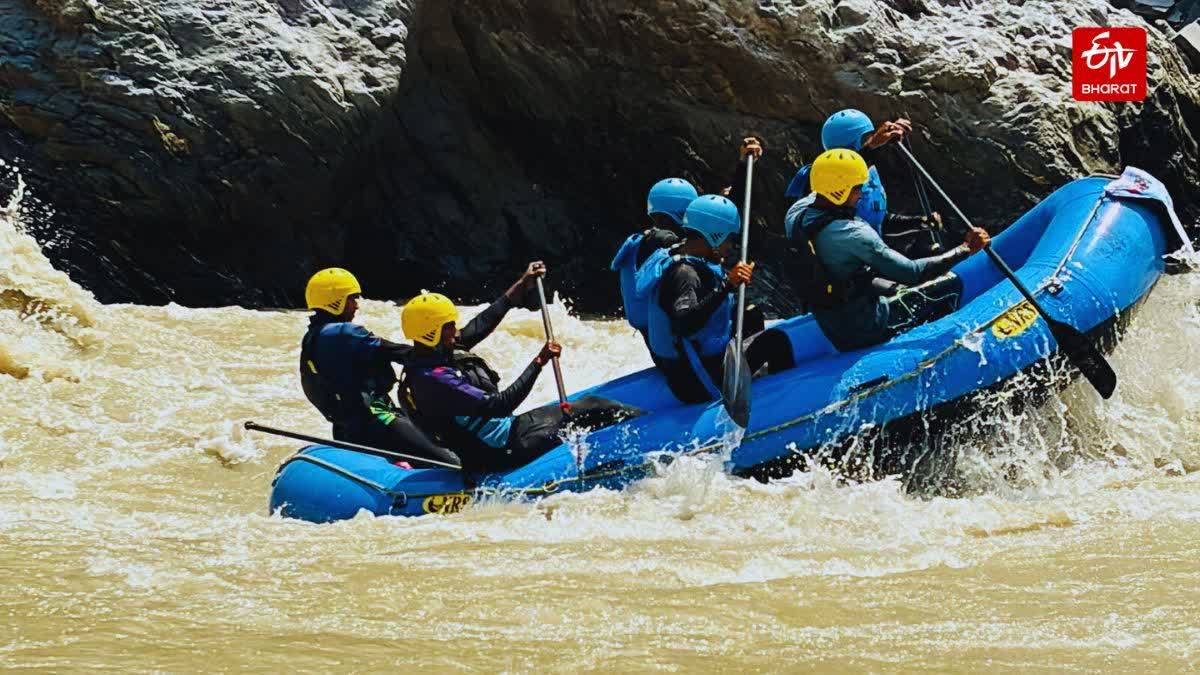Dehradun (Naveen Uniyal): As part of the Centre’s Rs 3,295-crore scheme to develop tourist destinations across the country, Uttarakhand is set to get a pie of it for an international rafting base station in Rishikesh, the spiritual town in the foothills of the Himalaya.
Now, with central funding to the tune of Rs 100 crore, the gateway to the famous Char Dham is set to give competition to New Zealand’s Queenstown, the top rafting place in the world which contributes $80 million to the Kiwi economy.
Known as the go-to place among rafters, Rishikesh has attracted over 15 lakhs rowers every year including 10 per cent foreigners. The most surprising part of it is that the rafting market is operated by private tour operators with minimal intervention from the government. Inspired by the astounding success, the Uttarakhand government is also planning to develop Rishikesh on the Queenstownian model.
"River rafting in Rishikesh has a $18-million market. Moving ahead of all the states of the country, Uttarakhand has succeeded in taking advantage of the central scheme and is going to build a rafting station of international stature. Through this, the state will take a big leap in the field of rafting. New Zealand's Queenstown receives 10 times less tourists than Rishikesh. Despite this, it fetched $80 million against Rishikesh's $18 million. Uttarakhand will also make every effort to reach the New Zealandian figure," R Meenakshi Sundaram, planning secretary of the state government, said.
Rafting is mainly done from places — Kodiyala, Marine Drive, Brahmapuri and Shivpuri. About Rs 2,000 is charged for the 36-km rafting stretch in Kodiyala, Rs 1,500 for the 22-km stretch in Marine Drive, Rs 1,000 for a 9-km stretch in Shivpuri and Rs 750 for a 9-km stretch in Brahmapuri.
The Vijay Rafting on the Ganges is done from September 1 and the activities cease during monsoon.
Aside from the Ganges, rafting is done on Kali, Alaknanda, Yamuna, Tons, Pindar and Bhagirathi. Pilgrims on the Char Dham Yatra and foreigners on spiritual sojourn to Rishikesh indulge in rowing.
Despite all these attractions, traffic remains a pain point in Rishikesh, pestering foreign and domestic tourists alike. It takes much longer than the expected time to reach rafting points. The lack of designated parking zones and toilets at the rafting zone has only exacerbated the situation. The funding line is expected to address these loopholes in amenities.
Considering the safety of the rafters the operators would be imparted training and all safety equipment would be made available to them. For this, the standards set by the World Rafting Federation will have to be implemented.
About 250 operators are managing 1,000 rafts in the Ganges under the aegis of the Ganga River Rafting Management Committee and no new licenses are issued to the prospective operators. The operators pay Rs 15,000 including the premium for insurance and Rs 20 per tourist to the government every year.
The tourism development board is responsible for the implementation of the Uttarakhand River Rafting/Kayaking Rules of 2014 for permits, age restrictions, and safety equipment. The board deploys a consultant for three years. But by the time the consultant understands the rules and regulations of rafting, his tenure is over.
This makes it a necessity to amend the rule to address the issue.
Also Read:



